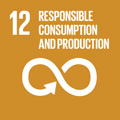- Docente: Augusto Bianchini
- Credits: 3
- SSD: ING-IND/17
- Language: Italian
- Teaching Mode: Traditional lectures
- Campus: Forli
- Corso: Second cycle degree programme (LM) in Mechanical Engineering (cod. 8771)
Learning outcomes
This class, together with ‘ Impianti Meccanici E Logistica Lm - 2" will go over the whole-integrated manufacturing process management in different kinds of industry: from industrial firms to service firms. The course will examine carefully main steps of susteinability in materials management, supply chain management, production (product design, manufacturing schedule, assembly, and governance control); completed item shipping and distribution ( logistics, facilities, storage, packaging, shipment, stocks management);
Course goal will be the understanding of the general models and features that lead to the decision, design and management of logistics systems, integrated, flexible. Systems that can successfully comprehend both actual physical flows and information flows, giving back an high-quality level of products on customer-care while reducing significantly idle times and manufacturing major costs, being also sufficiently flexible for market-adapting re-arrangements
Course contents
MEANS OF TRANSPORTATION IN INDUSTRY
Elevators machinery
Line transporters
FLEXIBLE AUTOMATIC GUIDED VEHICLES
Introduction to automatic guided vehicles
MANUAL STORAGE SYSTEMS AND STOCKING
The importance of storage systems and warehousing
Storage methods and different kinds of warehouse
Elements for Storage design
Information flow in storage systems
AUTOMATED WAREHOUSE
Storage Elevators
Service times/ operational times managing
DISTRIBUTION LOGISTICS
Activities flow in logistics
Competitive logistic and transportation
Multi-type transport, development scenarios in transportation and logistics
THE FLOW OF INFORMATION
Production informative flow
planning and production control
material management systems
Readings/Bibliography
- PARESCHI A., FERRARI E., PERSONA A., REGATTIERI A., “Logistica Integrata e Flessibile”, Ed.Esculapio, 2007
Teaching methods
applications and frontal lessons
Assessment methods
Test (in writing) in 2 sections: numerical problems and theory questions
Teaching tools
Numerical examples, case studies and learning objects written by teacher and available on IOL
Office hours
See the website of Augusto Bianchini
SDGs


This teaching activity contributes to the achievement of the Sustainable Development Goals of the UN 2030 Agenda.
